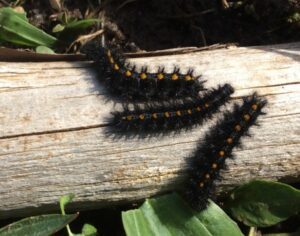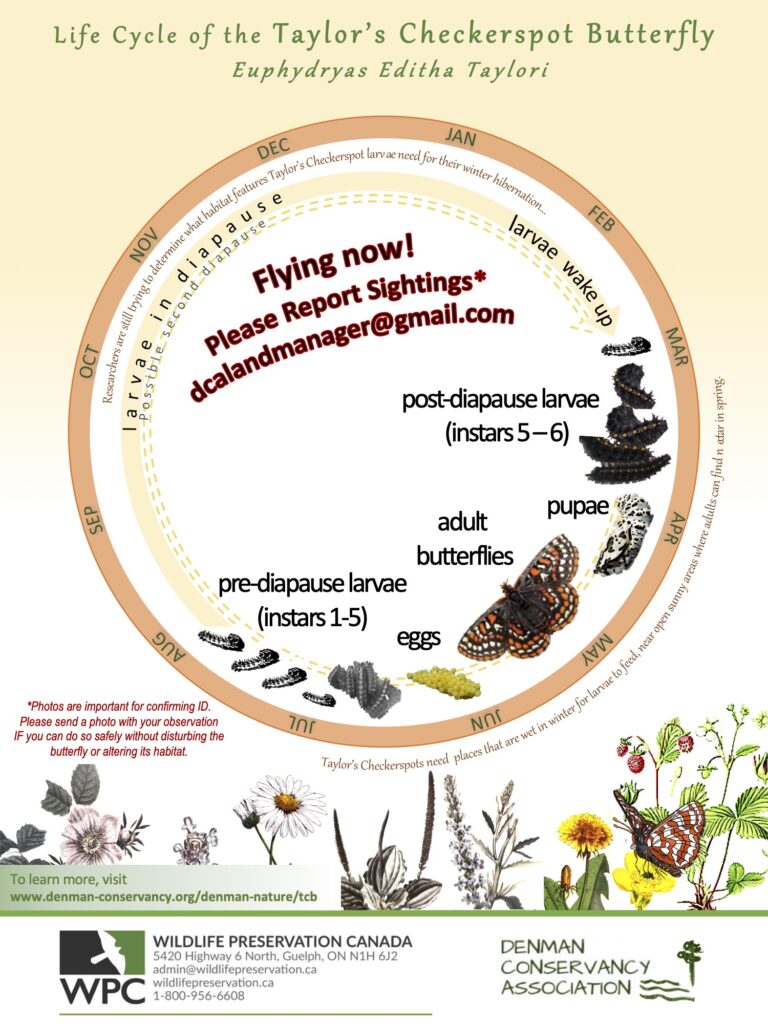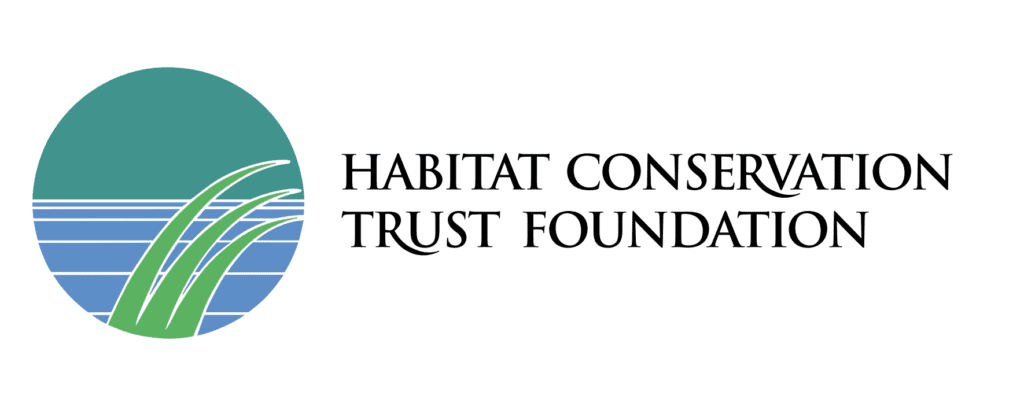Denman Conservancy Association, together with Wildlife Preservation Canada, and Habitat Conservation Trust Foundation, is working to steward Taylor’s Checkerspot Butterfly Critical Habitat, provide local residents with information and tools to ensure the future of the Taylor’s Checkerspot butterfly, and continue a lively culture of butterfly conservation on Denman Island. [Check out the little infomercial we have made HERE.]
Report for 2020 HERE.
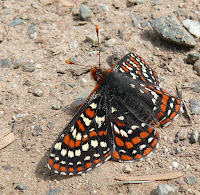
Taylor’s checkerspot is a small, orange, black and white checkered butterfly that was formerly common on BC’s south-coast. It was once found from Vancouver Island as far south as California but today is only known to live and breed in two locations in British Columbia, and a few locations in Washington and Oregon.
Here on Denman Island it’s seen in the spring in open meadows and shallow wetlands. Like many butterflies, Taylor’s checkerspots live as caterpillars for most of the year – almost 10 months. These caterpillars eat wild, weedy speedwells and plantains, not garden plants. So, they’re friends in the garden.
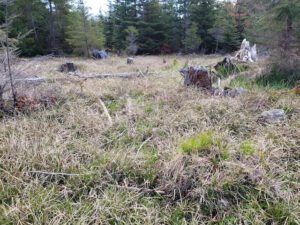
We see the butterflies in May & early June. They mate and lay eggs during that time. The eggs hatch as caterpillars, which grow through several skins and then go into hibernation for the winter, from around late August until late February or March. They’ll wake up and eat for a bit and then become pupae in April or May, finally transforming to butterflies in May to continue the cycle.
There are several other butterflies that could easily be confused with Taylor’s checkerspots. This handy butterfly ID Guide produced by Garry Oak Ecosystems Recovery Team can help you narrow down what species you are seeing, and avoid confusion.
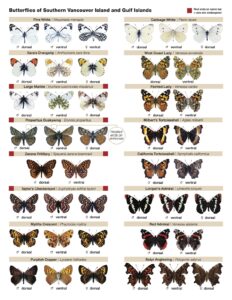
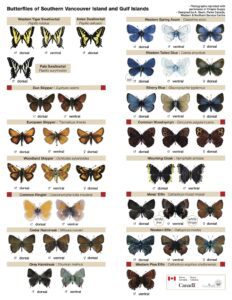
And below is a ‘Confusing Species’ sheet made by Jenny Balke to help you ID Checkerspots in comparison with some of the lookalike species that are common on Denman Island.
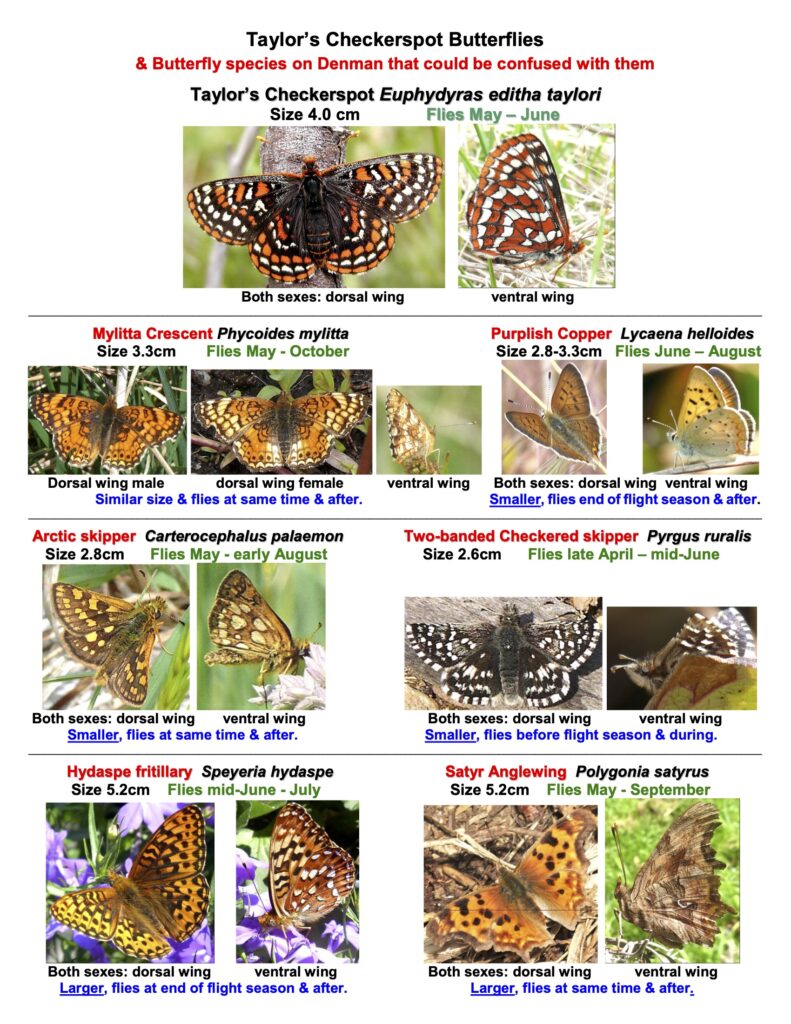
Taylor’s checkerspots are one of the species associated with Garry oak ecosystems. Garry Oak meadows were created and managed through traditional cultivation methods used by First Nations. Since early colonial times, many Garry oak species, including Taylor’s checkerspots, have declined dramatically, and now they are an endangered species, at risk of extirpation in Canada.
Before their discovery in Denman Conservancy’s Settlement Lands conservation area in 2005 butterfly specialists thought that Taylor’s Checkerspot was gone entirely from Canada, since it had disappeared from its last known home on Hornby Island. Interestingly, some Denman Islanders recall seeing the butterflies before 2005. In 2005, they were officially recorded on Denman by DCA biologist Jenny Balke and recovery work throughout the Salish Sea began.
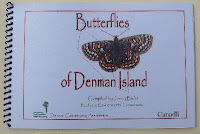
Find more information on Taylor’s Checkerspot Recovery Work in BC here. In 2010, Jenny Balke produced a wonderful print resource for learning about Taylor’s Checkerspot and other Butterflies of Denman Island. The book is available at Abraxas Books.
In 2020-21, thanks to support through a Land Stewardship Grant from Habitat Conservation Trust Foundation, DCA was able to carry out habitat stewardship work for Taylor’s Checkerspot in our Butterfly Reserve at the Settlement Lands conservation area.
Invasive species control was carried out, including removal of Scotch broom, St. John’s Wort, English Holly, and Everlasting Pea, and small tree seedlings were transplanted to other areas of the Settlement Lands to retain the open moist meadow habitat needed by Taylor’s Checkerspots.
Seeds of host plant species, provided through a Wild Seed Grant from Wildlife Preservation Canada, were seeded in the DCA Demonstration Pollinator Garden by youth participating in a Spring Break Nature Camp focused on Pollinator Education.
Habitat stewardship work is ongoing in the Reserve and updates are posted regularly in our Newsletter and on our Facebook Page.
DCA is grateful for support for this initiative from the following project funders:


